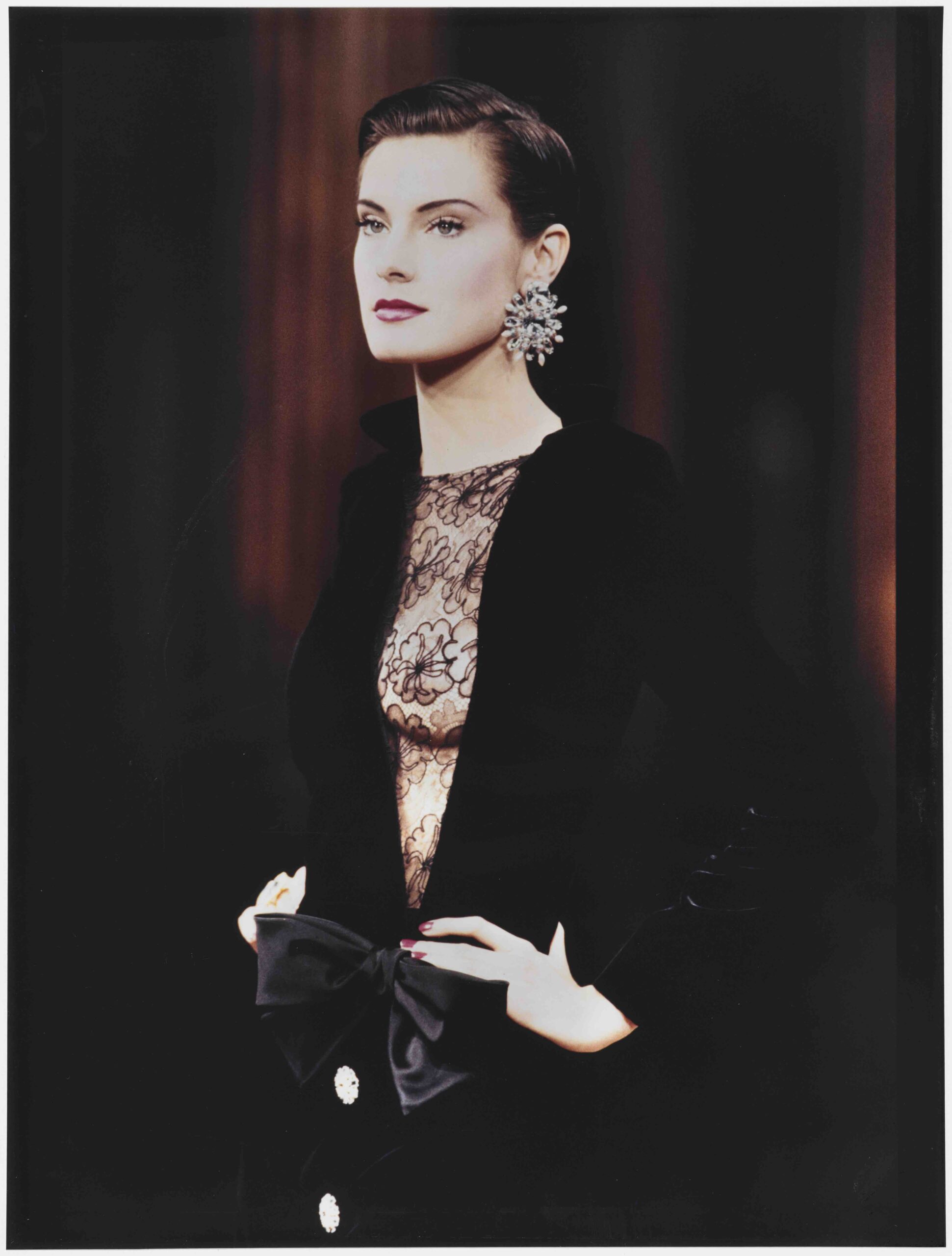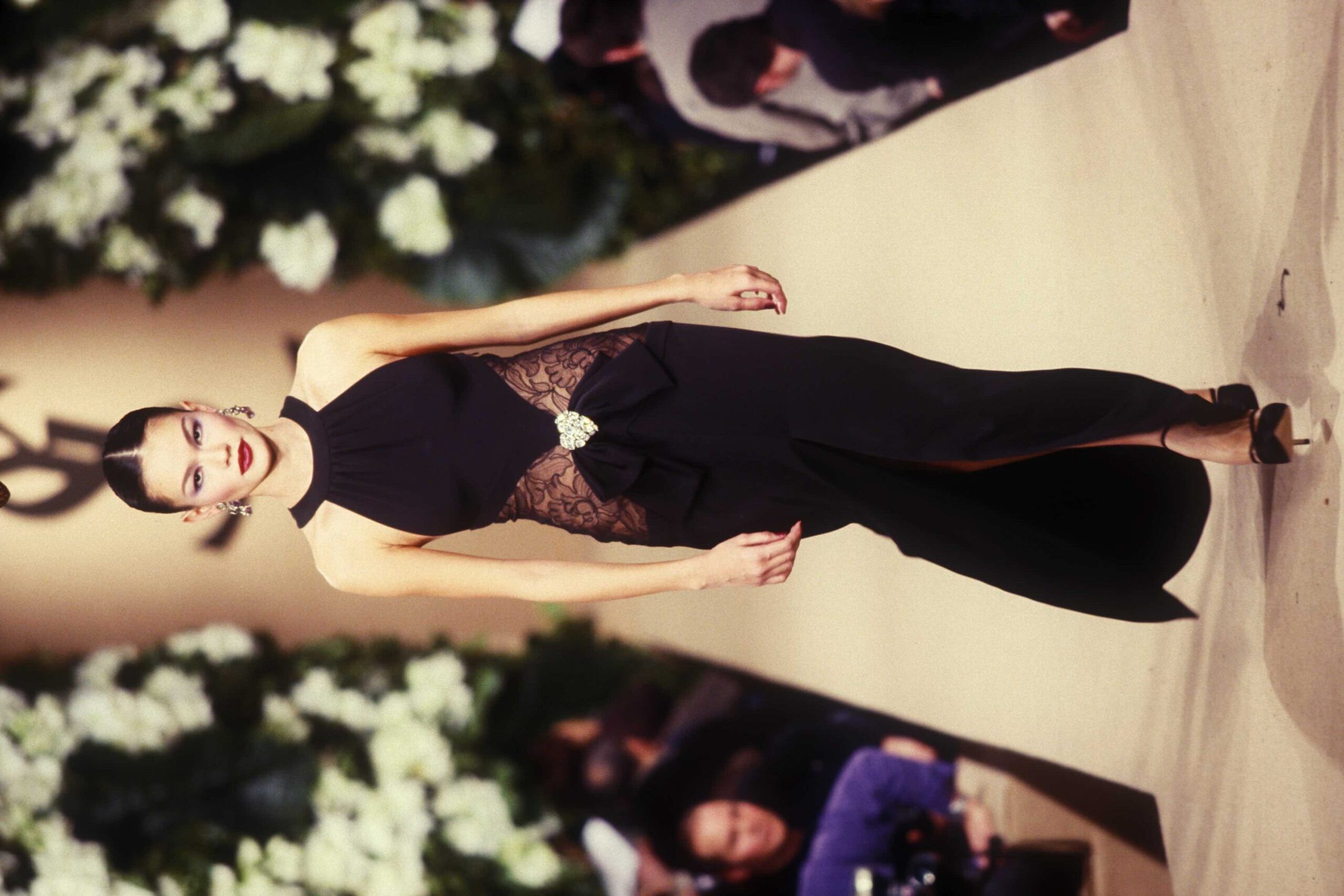Sheer: The diaphanous creations of Yves Saint Laurent
Musée Yves Saint Laurent, Paris
From February 9th until August 25th, 2024
It was only the 1960s when Yves Saint Laurent decided to introduce materials like chiffon, lace, and tulle into his collections, transforming the traditional concept of dressing into a subtle alternation between presence and absence that would forever shape the image of the Maison. The exhibition Sheer at the Musée Yves Saint Laurent in Paris, a couture story that began at the Cité de la Dentelle et de la Mode in Calais and curated by Anne Dressen, explores the theme of nudity and fluidity of bodies through the iconic pieces of the French Maison, including the topless habillé and the Nude Dress from the spring/summer collection of 1968: a completely transparent chiffon dress that cascades to the floor adorned only by a ring of ostrich feathers around the hips, modeled by Danielle Luquet de Saint Germain and worn by Laetitia Casta in 2010. Through around sixty models from the collections of the Pierre Bergé Foundation and the Museum for Lace and Fashion, the exhibition provides a detailed overview of garments made with various fabrics – such as cigaline – that allowed the Franco-Algerian designer to explore multiple nuances of transparency. The exhibition, organized into five thematic sections, also includes accessories, sketches, photographs, and glossy paper patterns that unveil the creative process of the couturier who, at just 21 years old, took the reins of the Maison Dior.

“I’ve worked for quite some time now with diaphanous fabrics. The important thing is to maintain their mysterious nature. I think I’ve done the best I could for the liberation of women. I created clothes that were perfectly in sync with the twenty-first century”.
Yves Saint Laurent approached clothing design with the concept of architecture applied to the body. Always constructed around feminine forms, the garment was first sketched on paper before being fully realized as a prototype on canvas. For each piece, the models drawn on tracing paper showed its deconstructed parts viewed from the front and back. The rolls of paper were then filled with technical annotations and sewing instructions. When a sheer fabric was chosen for the garment, the underlying stitching lines that structured it were made explicit. Yves Saint Laurent adopted organza, a flexible yet stiff-looking fabric, with the aim of revealing the lines of the garment’s architectural construction while creating a graphic and elegant silhouette. From the early years of his career, he worked alongside the women’s liberation movement: women dressed by Yves never went unnoticed, becoming even the living opposite of what, in this case, might be considered transparent. The most evident proof of this is the figure of the bride that closes the exhibition: she captures the viewer’s gaze under a veil of tulle or lace. The designer loved to give a non-conformist finishing touch to his fashion shows, which is why in 1981 he explained in a handwritten note that, after walking the runway, a dress should return to its podium veiled in black tulle and a bouquet of dark roses, followed by two children inspired by Goya. This use of the veil takes on an element of mystery for him, suggesting both presence and absence, allowing women to assert their deepest freedom. The overlay of tulle on wedding dresses, which could be white as well as purple or red, confuses the diaphanous nature of the garments, making them less simple and more ambiguous.

The word fluid, whether applied to fabrics or genders, perfectly describes the Yves Saint Laurent style. Just as he knew that women could assert a rebellious femininity by wearing trousers, he, better than anyone else, was able to capture movement by using soft, diaphanous fabrics.
Among other works, Anne Bourse‘s hypnotic drawings echo the couturier’s fabric and color overlays; Man Ray‘s experimental rayographs and fashion photographs recall the couturier’s research on lace; the fluidity of muslin and its movement are present in Loïe Fuller’s serpentine dance, captured by the Lumière brothers; finally, a work from Picabia’s Transparencies series attempts to make visible and invisible his model, the elusive part of her persona. In the next section of the exhibition, the female body is gradually unveiled through the use of sheer perforated fabrics. By using lace and tulle, certain parts of the body appear almost abstracted, as if illuminated. Upstairs, the exhibition explores the fluid movement generated by soft fabrics, such as muslin, which animate the body, covering and revealing it, accompanying it like a second skin, a dreamlike mist. Several bridal silhouettes with their veils of tulle, beloved and often reinvented by Yves Saint Laurent, close the exhibition. Although Yves Saint Laurent’s brides have never been entirely transparent, they still assert themselves with a sense of elusive freedom. Sheer: The diaphanous creations of Yves Saint Laurent allows visitors to discover the artistic, perceptual, and poetic vision of the great couturier; his creative rebellion against societal prohibitions remains at this historical moment more inspiring than ever. A journey through the life of Yves Henri Donat Mathieu Saint Laurent and the codes of the sexual revolution.






